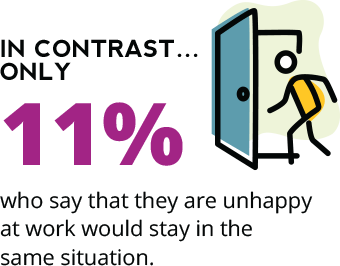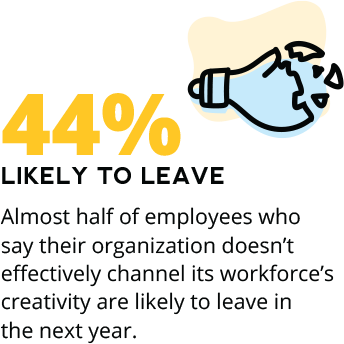Report
Guerilla retention tactics for keeping tech talent

How to hold on to your technology talent when Amazon moves into the neighborhood

There’s a goliath coming to town. Amazon is a technology giant with an eye on Metropolitan D.C.’s best tech talent. And the workforce is interested. In fact, 71 percent of D.C. area IT workers—and just over half of all workers in the region—would consider leaving their current job for Amazon.
In today’s tight labor market, retaining skilled tech talent is already hard. And it is about to get a lot harder. This is uncharted territory, and there is no competing on salary alone. That’s a non-starter when the competition has the deep pockets and the reputation that Amazon does.
If you are one of those employers sweating over the possibility of a mass exodus of star tech talent, stop. You can protect this critical strategic asset by acting now before Amazon HQ opens its doors. Start with these four guerilla retention tactics. And remember, David beat Goliath.

Behind salary, “more interesting work” is the highest cited reason that employees would consider leaving their jobs for Amazon.
Source: Eagle Hill Consulting Amazon HQ Survey 2016
1. Jazz things up
If employees are unengaged, or if they see no growth opportunities, they will naturally start looking elsewhere. On the other hand, the more interesting your workplace is, the more of a magnet it is for talent. A “sticky” workplace is one where it is crystal clear that people are valued and that the employer will invest in improving day-to-day experiences and supporting future career paths.
- Identify superstars in terms of skills, performance and relationships and prioritize keeping them. Excite people with bold development opportunities.
- Show people they are valued by asking what they think about how to improve the business and culture. Recognize and act on their contributions.
- Champion people’s passion projects. Carve out time for side projects and sabbaticals that allow them to pursue their pet interests, build skills or recharge.


Source: Eagle Hill Consulting Workplace Culture Survey 2018
2. Keep them happy
Employee happiness is an unsung strategic asset. After all, common sense says that happy people stay where they are, and our research backs this up (see findings above). But happiness means different things to different people. To invest in workers’ happiness, you must first discover what happiness means to them specifically. This gets to the heart of what motivates people to work for your organization.
- Instead of just asking people why they leave, conduct stay interviews to learn why they stay and create a process for acting on the feedback.
- Surround people with strong teammates and managers, and never assume that project and people managers are the same. Separate these competencies.
- Accept the fact that some people will leave. Get to work on strategies like alumni networks that can influence the best employees to “boomerang” back.


Source: Eagle Hill Consulting Workplace Culture Survey 2018
3. Solicit employee ideas
Ideas are the lifeblood of an organization, and not tapping into this can be as toxic to your organization’s competitiveness as it is your ability to retain employees. That is why it is so critical that you create an ideas culture where all ideas are welcomed, and failure is embraced as part of the process. No one wants to work in a place where their ideas are not heard and valued, even if they are not always implemented.
- Create a concrete way for employees to share their ideas and support out-of-the-box thinking with friendly competition and gamification strategies.
- Thread idea generation and innovation into professional development to give people the tools they need to free their thinking and improve problem solving skills.
- Do more than reward the stand-out ideas that work. Recognize everyone submitting ideas on internal social media streams or in person at special ideas award events.
Companies in the top quartile of employee engagement experience nearly 60 percent less turnover, are 21 percent more profitable and 17 percent more productive.
Source: Gallup Meta-Analysis, 2017
4. Bring culture to life
A strong culture helps you keep your people. It also drives the health of the business, and the bottom line. As foundational as it is, however, culture is not something you can physically see or touch. If you get intentional about how the culture is embodied in recruitment, performance management, incentives and more—and measure it—you create an engaging environment that people crave.
- Live your core values — the most actionable part of culture—by taking them off the wall and infusing them consistently into all workplace activities.
- Make culture somebody’s job by creating a head of culture position that guides the direction, engages leaders and employees, and measures culture.
- Infuse culture into the hiring process by hiring for culture and values, not the job. Evaluate candidates against the core values to get cultural fit right from the beginning.

